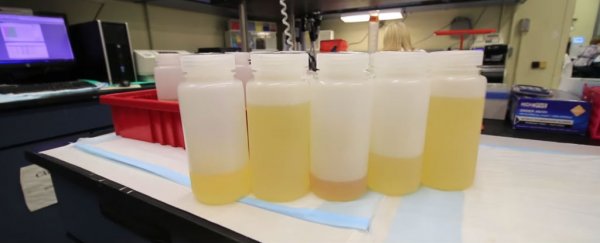Why do astronauts have to be so incredibly fit and healthy before they can spend time on the International Space Station (ISS)? Once they're exposed to the microgravity environment of that giant, orbiting lab, they'll start to experience disease-like symptoms as their bodies try to cope with the change. While it's not particularly pleasant for the astronauts, this is actually a great way to study the progression of disease and ageing, because symptoms and disorders progress a whole lot faster in space than they do here on Earth. So what do astronauts need to do to prepare for a lengthy space visit?
As the latest episode of Smarter Every Day explains, it's actually a whole lot more complicated than you might think. First off, the astronauts have to get used to an entirely new way of working out. On Earth, we exercise to keep our fitness and strength up, and our weight down, but up in space, you have your bones to worry about too. Plus how can you do resistance training in a weightless environment?
In the video above, Destin heads to the NASA gym to figure out the physics behind the exercise machines they use up on the ISS. Instead of just sticking a couple of huge weights on the ends of a stick - because in a microgravity environment, they'd just float away - astronauts have to learn how to fight against a vacuum to get the resistance they need.
And it's not just about building muscle - in space, astronauts stand to lose 2-2.5 percent of their bone density each month, which is a pretty terrifying prospect. This means that after 30 months, you'll end up with half your bone density, just by being in space. This is a huge deal when we consider that just getting to Mars is going to take us about three years.
Destin did some digging, and discovered that most of the bone density that's lost in space is related to the lower back, hip, and lower femur in the thigh, which makes sense, because when they're floating around so much astronauts don't have much need for the lower half of their body. But here's the strange part - the majority of the bone minerals lost by astronauts are being peed out of them.
Watch the episode of Smarter Every Day to find out why astronaut pee is considered a national treasure (I mean, of course it is), and why scientists at NASA have been hired to burn it. Let's just say you can discover a lot about the calcium content of pee by the colour it turns when it burns.
